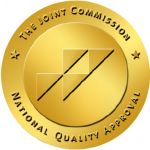As the opioid crisis in the United States continues to rise, the government has been faced with the tough decision to change legislation to encourage recovery and allow easier access to opioid alternatives. Just this week, the requirements necessary to prescribe buprenorphine/naloxone (brand name Suboxone), the drug used to alleviate withdrawal symptoms associated with opioid drugs, were lifted. As a result, it’s easier for healthcare professionals to provide opioid dependence treatment. Suboxone helps a patient to end illegal opioid use by replacing an addictive painkiller with a legal opiate-like medication that flattens withdrawal symptoms and makes it easier to commit to recovery.
Why A Change Was Needed
Unfortunately, the deaths occurring during the Covid-19 pandemic were not exclusively caused by the virus. The social restrictions associated with the worldwide quarantine and adapting to the new normal have made it extremely difficult for individuals who suffer from mental illness and substance abuse disorders. Consequently, recorded US drug overdose deaths have risen to an all-time high. The Centers for Disease Control and Prevention (CDC) “reported 90,000 drug overdose deaths in the 12 months ending in September, the highest number ever recorded in a one-year period. There is not yet data for all of 2020, and figures are preliminary.”
What Drug Prescription Regulations Were Changed?
With statistics like these, it makes sense that the new administration took action to address the opioid crisis and adjusted the requirements for using Suboxone. For many years it was deemed necessary to protect individuals with addiction issues from accessing opioid alternatives. Just this week, the Biden administration made it easier for all healthcare professionals, not just doctors, to prescribe an opioid addiction medication like Suboxone. The Biden administration changed the legislation that prevented health professionals from providing direct access to Suboxone unless they had undergone extra training. This twenty-year-old legislation aimed to prevent abuse of the drug by limiting how many doctors could prescribe it. It was challenging to easily access Suboxone, and subsequently, those with opioid use disorders could not misuse the drug recreationally.
Current statistics on overdose deaths this year show that treatment for opioid addiction needs to be more accessible, and the majority of drug users do not have access to doctors with enough training to prescribe the medication. For many people, finding a prescriber was the biggest obstacle, so loosening the criteria for professionals to prescribe Suboxone appears to be the logical next step. Dr. Rachel L. Levine, the 17th Assistant Secretary for Health for the US Department of Health and Human Services (HHS) believes that this change “will increase the number of prescribers and the number of patients who receive prescriptions.”
While the Trump administration was planning to adjust the legislation from 2000 on the guidelines to prescribing Suboxone, this change was only intended to loosen the regulations of training for doctors to prescribe Suboxone, not for all health professionals. The Biden administration considered these changes but took time to further consider other alternatives. After devoting time to review the law and policy, the ultimate decision was made to lessen guidelines for all health professionals, not just doctors, to produce more prescribers in the country to have a larger impact in combating the opioid crisis. This means that in addition to doctors, PAs (physician assistants), nurse practitioners, certified nurse midwives, and qualified nurses can prescribe Suboxone without any additional training.
How These Changes Will Help Treat Addiction
This decision went beyond politics. The American Medical Association (AMA) approved of the adjustment and encouraged removing other barriers in the way of accessible treatment for drug addiction. The AMA considers how strict regulations for prescribing treatment drugs impact a physician’s decisions to treat certain populations of patients and be of service to all communities in need. In the USA, individuals with addiction are a community desperately in need of treatment. Dr. Patrice Harris, leader of the AMA’s opioid task force, argues that: “Patients are struggling to find physicians who are authorized to prescribe buprenorphine; onerous regulations discourage physicians from being certified to prescribe it.” Research from John Hopkins Bloomberg School of Public Health supports this idea as well. Renowned addiction researcher Brendan Saloner explains that “the changes provide more on-ramps to treatment…This will help in health centers, hospitals, jails, and prisons [provide treatment].” These are places where many people in need of treatment turn to for help, but often these facilities do not have a healthcare professional on staff able to prescribe Suboxone, an effective first step in getting off illegal opioids.
With these new guidelines, health professionals with the approved titles will be able to prescribe Suboxone to a maximum of 30 patients at a time. What will remain as a barrier to Suboxone treatment is solely the number of patients that receive treatment. Stricter requirements will remain for prescribers who want to treat more than 30 patients at a time. One other caveat, that is considered as a loosened regulation, is that health professionals do not have to refer patients to counseling services and encourage therapeutic support on top of the medication anymore.
At Boardwalk Recovery Center, we believe that healing is holistic. Our psychiatrists can prescribe Suboxone, and do so with extensive support and guidance along the way. We believe that a collaboration between counseling and medicine is necessary to achieve optimal recovery.
Life can be good again and we’d like to show you how.






